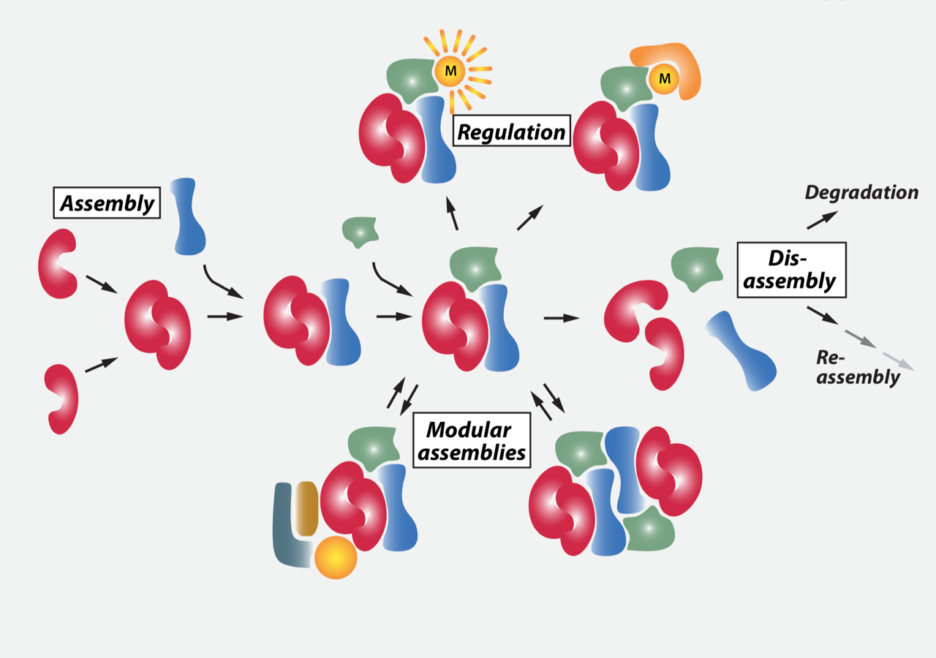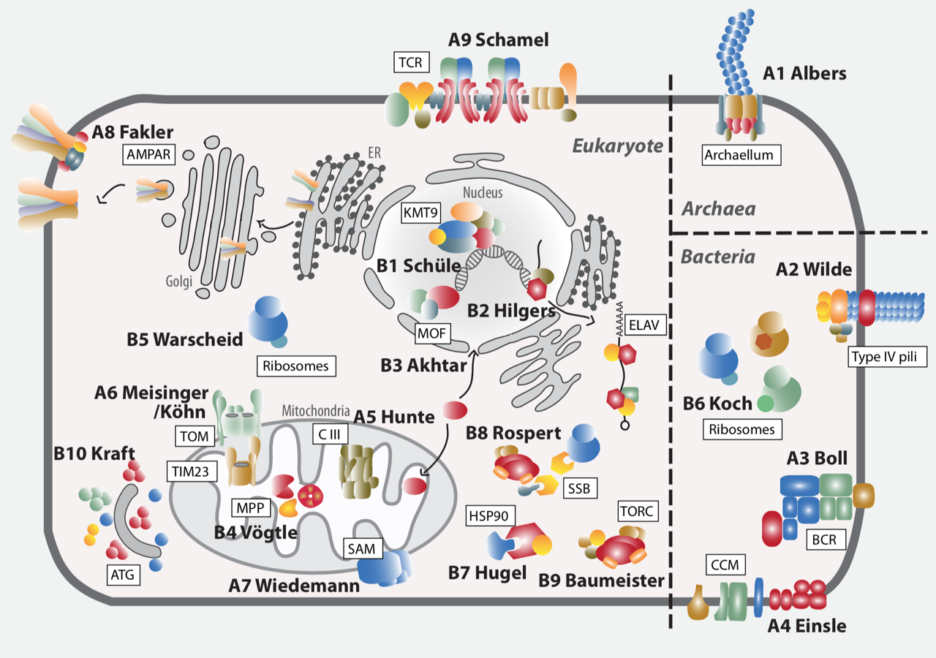The vast majority of cellular functions are not carried out by individual proteins, but are rather accomplished by protein assemblies that range in size from a few subunits to a multitude of different components. These multiprotein assemblies act as protein machineries that perform (and control) energy conversion, replication, repair and transcription of DNA, translation, folding and degradation of proteins, they mediate intra- and extracellular communication as well as transport of molecules and ions. Moreover, for several of these tasks individual protein machineries apparently do not operate as isolated entities but may integrate into larger networks where they combine via functional and physical interactions for the final output. Unbiased analyses by proteomic technologies demonstrated that protein machineries display considerable spatio-temporal variability in molecular appearance, i.e. their subunit composition may differ between distinct cellular locations or between different developmental or cellular states.
Currently only little is known about how protein machineries are assembled during biogenesis, how they are organized in modular (sub-)assemblies and how the dynamics in assembly and organization and their regulation are used for precise operation of cellular functions.
Accordingly, the main goals of the SFB 1381 are to understand
- how complex protein machineries are assembled into functional units during biogenesis
- how modular assemblies and assembly dynamics of protein machineries determine function
- how such modular (sub-)assemblies are integrated into dynamic cellular networks
- how assembly dynamics of protein machineries are controlled by external stimuli or changes in cellular boundaries and
- how such dynamics are used for the precise adaptation of cells to such stimuli or changes in cellular boundaries to generate appropriate responses.
The molecular dissection of these processes is fundamental for the comprehensive understanding of the dynamic processes that define input-output relations in a living cell, as well as for their target manipulation or therapeutic intervention.
All projects of the SFB 1381 investigate multi-component protein machineries that carry out fundamental biological processes in various subcellular compartments of distinct types of cells or organisms. Area A addresses organization and dynamics of protein machineries embedded into distinct cellular membranes, while the focus of Area B is on soluble protein machineries and spans complex assemblies accomplishing chromatin remodeling to removal of entire organelles.







